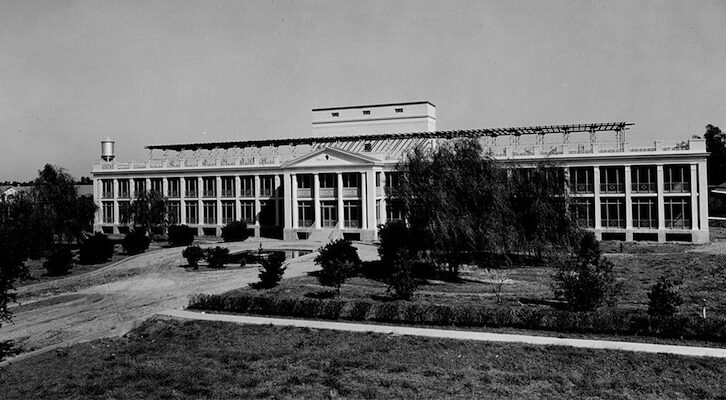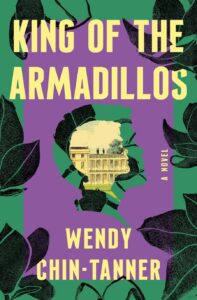
The Burden of Truth: Fictionalizing My Father’s Years at a Federal Leprosy Treatment Center
Wendy Chin-Tanner on the Dual Gaze Required to Write a Novel Inspired by True Events
There was a secret in my family when I was growing up. We could talk about it at home, but we couldn’t mention it to anyone else, not even to other relatives. In 1954, at the age of sixteen, my father was diagnosed with Hansen’s disease, commonly known as leprosy, and sent to a federal institution for treatment in Carville, Louisiana where he stayed until 1963.
Leprosy is perhaps the most misunderstood and stigmatized illness on earth, causing panic though it’s entirely curable and only minimally communicable. In fact, 95% of the human population is naturally immune. Nevertheless, when my dad was cured, his counselor told him to keep Carville to himself if he wanted to have a “normal life” on “the outside.” To speak of leprosy was a taboo in Chinese culture, too, so much so that my grandparents never even told my aunts and uncles about my dad’s condition. They thought their brother had spent nine years in the South because of his asthma.
Secrecy aside, my dad’s best stories were always about Carville. To me, it was like Narnia or Oz, a world unto itself where, despite his illness, he finished high school and received lessons in piano, voice, and musical composition. Established in 1894 on the grounds of an old sugar plantation along the Mississippi River between New Orleans and Baton Rouge, Carville’s 450 acres were hauntingly beautiful, with moss-covered oaks, a lake, and amenities that made it seem more like a small progressive town than a leprosarium. Like Rushdie’s “imaginary homelands,” I’d been imagining Carville since I was a little girl.
Many years later, while recovering from cancer, my dad decided that taboos were for the birds and gave me carte blanche to write about Carville. The result is my debut novel, King of the Armadillos. Set in the 1950s, its hero is a young man whose story was inspired by my dad’s. Victor is a high schooler living in the Bronx with his father when he’s diagnosed with Hansen’s disease. Since he needs surgery and extensive treatment, he’s sent to the federal leprosarium in Carville, Louisiana, to be quarantined until—or unless—he’s cured. At first, Victor feels like a prisoner, but he soon finds a community of patients who become his friends, mentors, and rivals. As his body begins to heal, he falls in love for the first time and discovers his calling as a musician. King of the Armadillos is fiction, but the sociocultural contexts of its people, place, and time are very much rooted in reality.
To speak of leprosy was a taboo in Chinese culture, too, so much so that my grandparents never even told my aunts and uncles about my dad’s condition.
When I set out to write about Carville, I had no idea how to go about it. I knew how to write a sociology paper and I knew how to write a poem, but I’d never written fiction before, not even a short story. Though I wasn’t sure what shape the narrative should take, my subject’s historical aspect made creative nonfiction the most obvious genre to try. I didn’t have much of a clue about that either, but in my graduate social science program, we were taught that the answers were always in the data, so I simply started by gathering it.
Over the next few years, my dad helped me access an enormous amount of research material from the National Hansen’s Disease Museum, including hundreds of pages of medical reports and archival photographs. We watched documentaries together, pausing when I had a question or when something jogged his memory. I read everything I could about Carville—history books, newspaper articles, academic papers, oral histories, old issues of The STAR, the magazine founded and published by Carville patients, and Alone No Longer, a memoir by its editor-in-chief, Stanley Stein.
In 2016, my dad and I took a trip to Carville, his first time back in 53 years. When I wasn’t in the archives, I gathered “thick data,” ethnographic observations and sensory details from the fieldsite: the morning fog from the river; the humidity in the air; the taste of freshly shelled pecans; the sound of the first piano my dad ever played; the echo of our footsteps in the covered walkway; the sight of the barbed wire fence surrounding us. With each new discovery, I became more absorbed by the world of Carville, but also increasingly overwhelmed.
In the 1950s, Chinese Americans represented about fifteen percent of Carville’s patient population, far more than the .1% they constituted in the rest of the country, but their firsthand narratives were conspicuously absent from the oral histories, documentaries, and other materials I found. Whether due to self-selected abstinence, institutional oversight, or intentional omission, this historical lacuna made it feel even more important for me to write through the lens of my dad’s experience as a young Chinese American patient, to fill that gap.
And as I learned about the radicalism of the patient community, how they transformed the individual trauma of their illness, exile, and isolation into the collective impetus to fight for their civil rights, I felt compelled to tell their story, too. But as I sat down to write, the weight of accurately portraying my father’s experience plus the Carville community’s was a heavy burden to bear.
Regardless of genre, every book is a mystery that unfolds for me in the act of writing. The first pages I attempted of King of the Armadillos wound up in the opening scene, the train journey Victor takes from NYC to New Orleans. Long before I aspired to write my book, to better understand my dad’s time in Carville, I’d read Thomas Mann’s The Magic Mountain, which also begins on the train its hero takes to a sanitorium. This homage should have been my first clue that King of the Armadillos was a novel, but despite struggling with the nonfiction approach, I thought I was just afraid of prose. To help myself, I pretended to write poems instead, collecting lyrical vignettes like scraps of fabric to quilt together later.
The next clue emerged when I began to experiment with Sam and Ruth, Victor’s father and pseudo-stepmother, who were loosely inspired by my grandfather and a woman he was rumored to have been involved with after the war. In real life, I barely knew my grandfather whose relationship with my dad had been difficult and distant, and I’d heard only whispers about the existence of this woman. And yet, Sam and Ruth leaped off the page. I knew exactly who they were, how they sounded, how they acted, and why.
By comparison, Victor’s character wasn’t nearly as multidimensional or alive. How could that be when my dad was such a rich source of data? It turned out that this in itself was the problem. Whenever my dad read a draft, he’d point out the inaccuracies, not just factual ones, but anything that didn’t conform to his own narrative.
“Victor isn’t you,” I kept reminding him. I should have been reminding myself, too.
My closeness to my dad had become a barrier to understanding the interiority of the character inspired by him. Lost in the literary fog of a child’s idealization, I couldn’t find the freedom my adult imagination needed to see Victor clearly. To make the story work, I realized, Victor had to be as difficult, contradictory, and flawed as I was. And I had to stop worrying about how my dad might feel about that.
The final clue presented itself as an obstacle to portraying Victor’s musical awakening. My dad taught me to play the piano and sing when I was kid, but I’m no musician. And I couldn’t research my way around that. In desperation, I tried an exercise where I translated my own relationship with writing—my discovery of poetry and how the music of the words came to me when I wrote—into Victor’s relationship with playing the piano, singing, and composing songs. Suddenly, magically, Victor came alive, and King of the Armadillos became a novel.
I knew now that writing this book would require a dual gaze, keeping the world of Carville and its sociocultural context as realistic as possible while letting my imagination run wild in its exploration of the people who inhabited it. Practicing a twist on Keatsian negative capability, I tried to remain “in uncertainties, Mysteries, doubts, without any irritable reaching after fact and reason” while staying within the bounds of historical accuracy. In the process, I discovered that I could root my story in the solid ground of verisimilitude and let its branches grow high into the open air of emotional truth at the same time.
By giving Victor pieces of myself, I freed him from my dad and freed the book from an overwhelming responsibility to authenticity. Once my fictional Carvillians could coexist with the real Carville I’d so painstakingly researched, I stopped “reaching after fact and reason” and dove into the mysteries of my novel with abandon. King of the Armadillos embraces the uncertainties of fiction, because in the end, to tell my dad’s story, I had to tell my own.
_________________________________

King of the Armadillos by Wendy Chin-Tanner is available now via Flatiron Books.
Wendy Chin-Tanner
Wendy Chin-Tanner is the author of the poetry collections Turn and Anyone Will Tell You, editor of Embodied: An Intersectional Feminist Comics Poetry Anthology, and copublisher at A Wave Blue World, an independent publishing company for graphic novels. Born and raised in New York City, she lives in the Hudson Valley with her family. King of the Armadillos is her first novel.



















